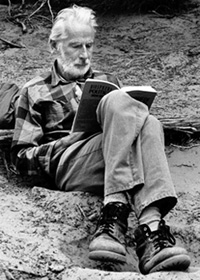- Ayrıntılar
-
Kategori: Deep Ecology
by Alan Drengson

In 1973, Norwegian philosopher and mountaineer Arne Naess introduced the phrase “deep ecology” to environmental literature. Environmentalism had emerged as a popular grassroots political movement in the 1960s with the publication of Rachel Carson's book Silent Spring. Those already involved in conservation and preservation efforts were now joined by many others concerned about the detrimental environmental effects of modern industrial technology. The longer-range, older originators of the movement included writers and activists like Henry David Thoreau, John Muir and Aldo Leopold; more mainstream awareness was closer to the “wise-use” conservation philosophy pioneered by Gifford Pinchot.
In 1972, Naess made a presentation in Bucharest at the Third World Future Research Conference. In his talk, he discussed the longer-range background of the ecology movement and its concern with an ethic respecting nature and the inherent worth of other beings. As a mountaineer who had climbed all over the world, Naess had enjoyed the opportunity to observe political and social activism in diverse cultures. Both historically and in the contemporary movement, Naess saw two different forms of environmentalism, not necessarily incompatible with each other. One he called the “long-range deep ecology movement” and the other, the “shallow ecology movement.” The word “deep” in part referred to the level of questioning of our purposes and values when arguing in environmental conflicts. The “deep” movement involves deep questioning, right down to fundamental root causes. The short-term, shallow approach stops before the ultimate level of fundamental change, often promoting technological fixes (e.g. recycling, increased automotive efficiency, export-driven monocultural organic agriculture) based on the same consumption-oriented values and methods of the industrial economy. The long-range deep approach involves redesigning our whole systems based on values and methods that truly preserve the ecological and cultural diversity of natural systems.
Read More











